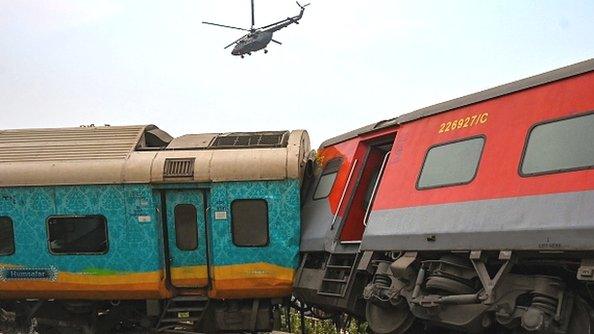Balasore: How did three trains collide in Odisha?
- Published
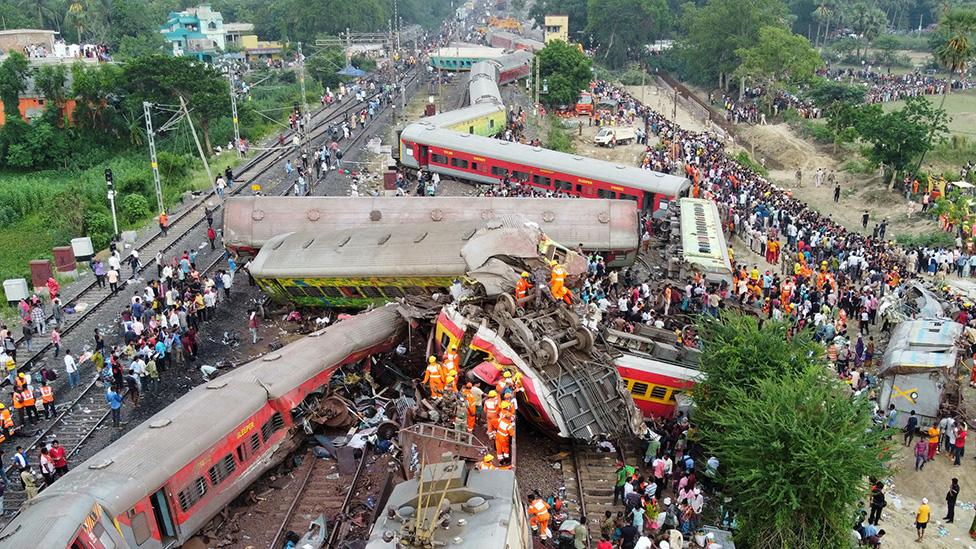
A devastating crash involving three trains in the eastern Indian state of Odisha has killed 275 people and left more than 1,000 injured, many of them seriously.
The cause of the crash, which is being described as India's worst this century, is not yet clear.
How many trains were involved?
The crash took place around 18:55 (13:25 GMT) on Friday near the Bahanaga Bazar station, about 270km (170 miles) south of Kolkata.
The trains involved:
Coromandel Express, which was a few hours into its journey from Shalimar railway station in the state of West Bengal to the southern city of Chennai
Howrah Superfast Express, which had set off from Yesvantpur station in Bengaluru and heading towards Howrah
A stationary goods train, which was standing at the Bahanaga Bazar station
A fourth stationary goods train on an adjacent line and may have suffered minor damage.
What happened?
There are four tracks at the Bahanaga Bazar station.
A railway ministry official told the BBC that lines 1 and 4 had goods trains parked on them.
The passenger trains had been travelling in different directions on tracks two and three.
Full details of how the deadly crash happened are still not available, but for some reason, the Coromandel Express travelling at 128km/h (79.5mph) left its line and entered a loop line, smashing into the back of a stationary goods train.
The goods train was loaded with iron ore, which authorities says meant the passenger train took the entire impact on collision.
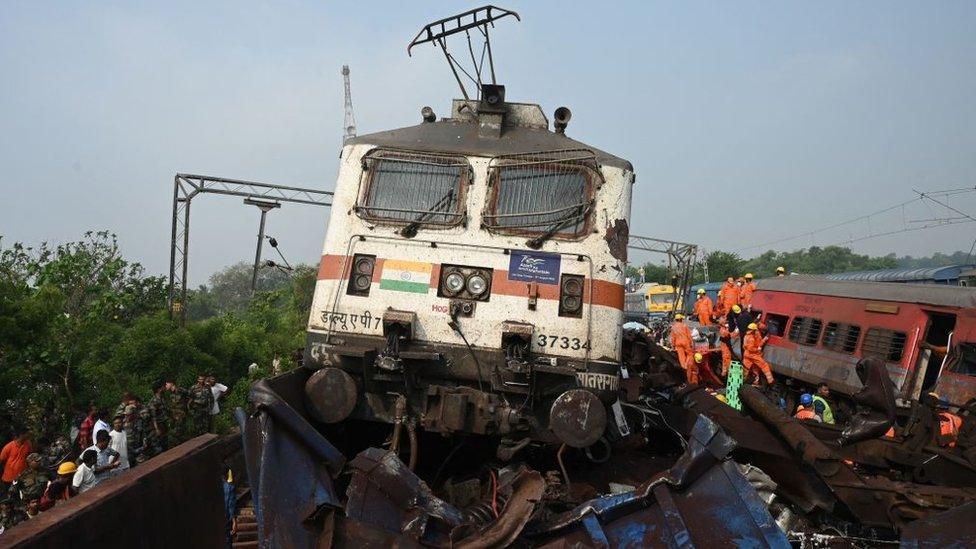
The engine and some coaches of Coromandel Express went over the freight train, according to authorities
The impact caused 21 carriages from the Coromandel Express to derail, throwing them across the adjacent tracks.
As the accident happened, the Howrah Superfast Express was passing in the opposite direction at 126km/h (78mph). Coaches from the derailing Coromandel Express collided with rear two coaches of the Howrah Superfast, knocking them off the track.
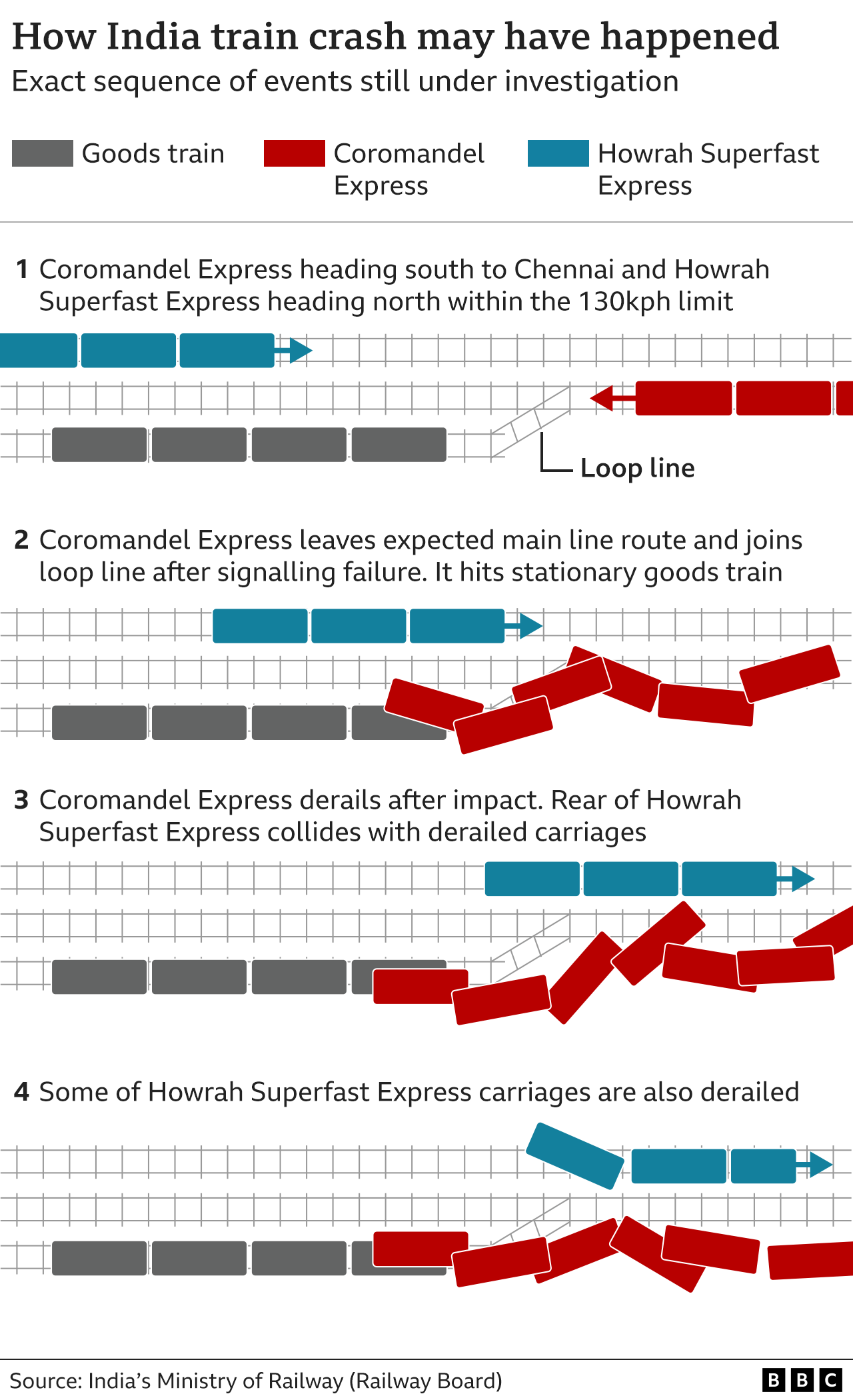
Hundreds of ambulances, doctors, nurses and rescue personnel were sent to the scene and worked for 18 hours to rescue passengers and pull out bodies.
India rail expert Rajendra Aklekar said the driver of the Coromandel Express would have had "absolutely no response time to halt the train" as it all happened in a matter of seconds.
Villagers from the nearby area described the devastation caused by the crash.
Girija Shankar Rath lives near the station and was among the first people to reach the accident site.
"There was total chaos and the whole area was engulfed in smoke. And then we saw Howrah Superfast Express which came hurtling down and hit some of the Coromandel wreckage and two of its coaches also derailed," he said.
Another eyewitness, Tutu Biswas, said he had gone to the site after hearing a loud noise.
"Some of the coaches of the Coromandel Express had gone over the goods train," Mr Biswas said. "There were lots of injured people and bodies here. I met a young boy who had lost both his parents. He was crying and then he died too."
Why did the trains collide?
Railway officials said preliminary reports suggest the crash was the result of a signal fault and a "change in electronic interlocking".
In railway signalling the electronic interlocking system sets routes for each train in a set area, ensuring the safe movement of trains along the track.

In a press conference, authorities said: "We have found there is probability of some kind of a signalling interference. Whether it was manual, whether it was incidental, whether it was weather related, whether it was because of wear and tear, whether it was a maintenance failure, all that will come out after the enquiry."
The former Director General of Signal & Telecommunications at Indian Railways, Akhil Agrawal told the BBC: "The chances of a computerised error is minimal, it could be a human error or it could be outside interference."
The Railway Board, the railway ministry's top decision making body, has recommended a separate investigation by the Central Bureau of Investigation (CBI).
The CBI investigates high profile criminal causes, including serious financial frauds and murders.
While the investigations are ongoing, some of the tracks were opened up to railway traffic on Monday.
BBC News India is now on YouTube. Click here, external to subscribe and watch our documentaries, explainers and features.

- Published3 June 2023
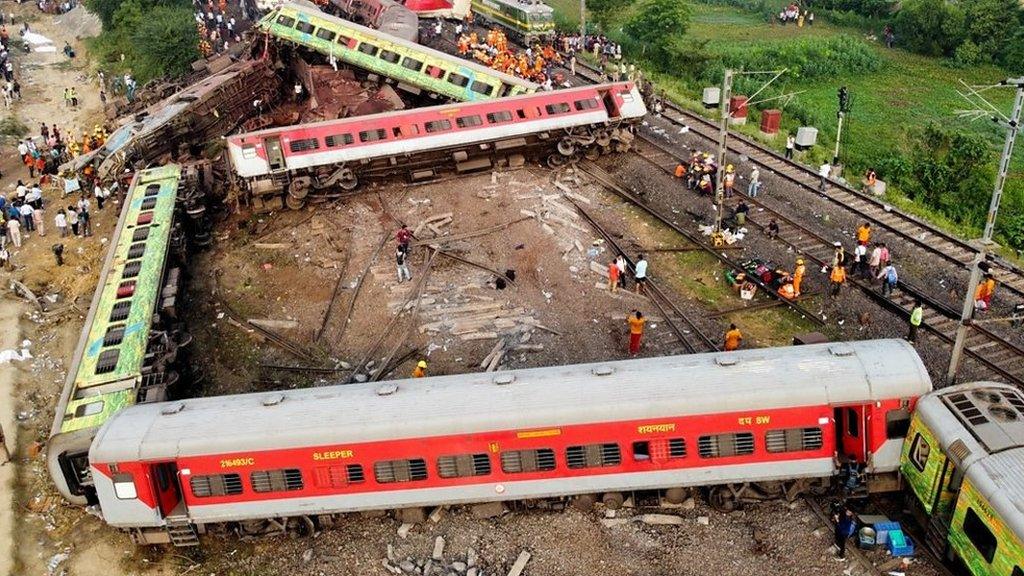
- Published3 June 2023
